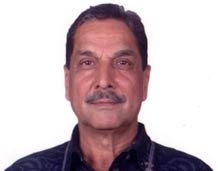The Maoist Menace: Time for Serious Action
Home Minister P. Chidambaram, widely seen as competent, knowledgeable and proactive, is reported to have said in a television interview that the government might “revisit’ its anti-Naxal strategy. He said, “I took to the cabinet committee a case for a larger mandate, but I was given a limited mandate.”1 This in plain language means that the Para-Military forces are fighting with one hand tied behind their back or at least with very restrictive rules of engagement.
There have been many reports alleging poor training and leadership and a visible absence of synergy between the central and state governments. At the same time the Home Minister has hinted that the Chief Ministers want air support. It seems that while the insurgency has matured with the insurgents becoming bolder with each success, the state and central governments’ security departments are increasingly frustrated. It was not difficult for the Maoist leadership to find out that some ten-twenty Special Forces personnel would be travelling on a local bus and they promptly used the opportunity with complete disregard for the thirty or more innocent civilians who were also on the ill fated bus. It is not understood why they had to travel in a bus and not in a secure well protected convoy. Is this once again a case of failure to strictly follow the laid down orders? If anything, such incidents have further reinforced the impression that the police forces and their superiors have failed to learn lessons from the recent past.
Given the heavily forested and hilly terrain of the Maoist affected areas, it is well nigh impossible to give total protection to all traffic on the few roads nor is it practical, as Chief Minister Shri Raman Singh has said, to protect some 20,000 villages. With the approach of the monsoon ground conditions will only worsen giving the insurgents a free rein. It is time the central and state governments showed the necessary determination and resolve to save innocent lives. Every one knows that no developmental activity is possible without first securing the area.
There is a wrong impression gaining ground that air support is always offensive and that the air force is the only agency to provide that. The BSF, CRPF and above all State Governments possess some helicopter assets. It is not known if these have been pressed into service at least for humanitarian tasks such as casualty evacuation, logistics, medical support, and communications. It should be possible to reduce the response time in emergency situations to a few tens of minutes when helicopters are stationed at suitable locations.
The Indian experience in Sri Lanka (1987-1990) proved beyond doubt the efficacy of such air operations when damage to our helicopters was minimal even when the opponent was far better equipped and experienced. If and when deployed, army and/or air force support helicopters (with some defensive armament) can rush reinforcements as well as arms and ammunition where needed without really having to open fire. Such support is bound to raise the morale of the dispirited police forces as they would be assured of assistance in an emergency. Air presence is a critical factor in counter insurgency operations as it provides a high level of dominance and control over the situation. Any insurgent would think twice before ambushing police parties or patrols when he knows that additional help is at hand to the police forces and that he might not get away without injury. This will no doubt require the army and/or air force to set up control centres and operations rooms manned with young yet experienced and energetic officers in selected areas/sectors and establish two way communications with the ground force commanders in the field, medical and logistics teams, and helicopter crews. To begin with some 6 to 8 helicopters in strategic locations may be adequate if prompt refuelling and servicing is ensured to generate high sortie rates for regular and frequent air patrols. Once some experience is gained, confidence and trust built, and Standard Operating Procedures (SOP) disseminated to all concerned, air patrols will help deter wanton and blatant attacks by the insurgents. The situation will, however, require close monitoring on a daily basis to fine tune the operation and review and modify tactics when needed. The government(s) would also be expected to depute responsible, experienced and articulate spokespersons to give details of the operations at regular intervals to allay the fears of common people. Air support would also enable the police/Para-Military forces to increase their presence on the ground.
Visual reconnaissance would also help vet/refine intelligence inputs as reports can be verified quickly. Not only would the response time reduce significantly but assured mobility would put new life in the police forces and further improve their determination and resolve. Not many ministers and other political leaders would want to visit these areas but even so the temptation to misuse helicopters must be avoided at all costs. One does not have to be an air power expert to see the urgent need to deploy all available air assets if we are serious about saving innocent lives. And if we need inspiration there is no better example than the recent Pakistan Army and Air Force operations in the troubled frontier regions. Our experience shows that fighting insurgency is invariably a long haul and we must not allow our determination to flag. It seems premature to talk of a ceasefire given that in the past such breaks have been used by the insurgents to strengthen themselves.
- 1. Indian Express, New Delhi, “We will seek a larger mandate, CMs want air support, says PC,” 18 May 2010.








